Text

THE MOON PRINCESS: A Fairy Tale by Edith Ogden Harrison. (Chicago: McClurg, 1905) Illustrated by Lucy Fitch Perkins.






source
39 notes
·
View notes
Text
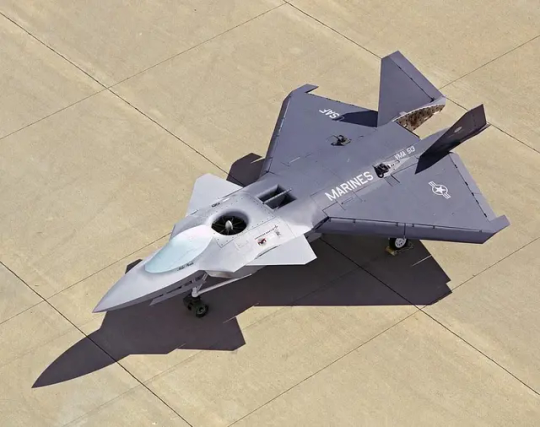

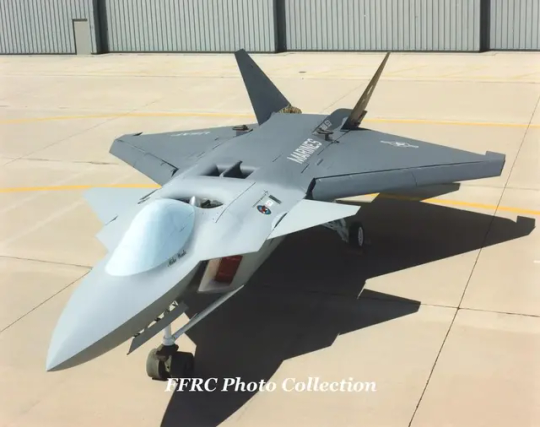
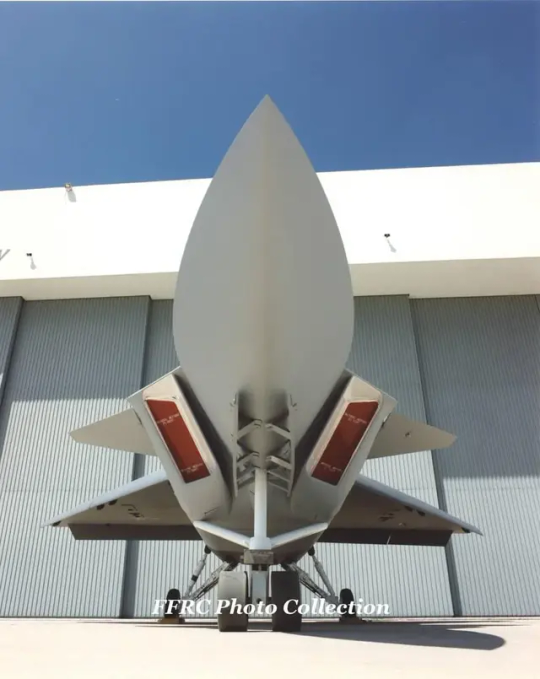
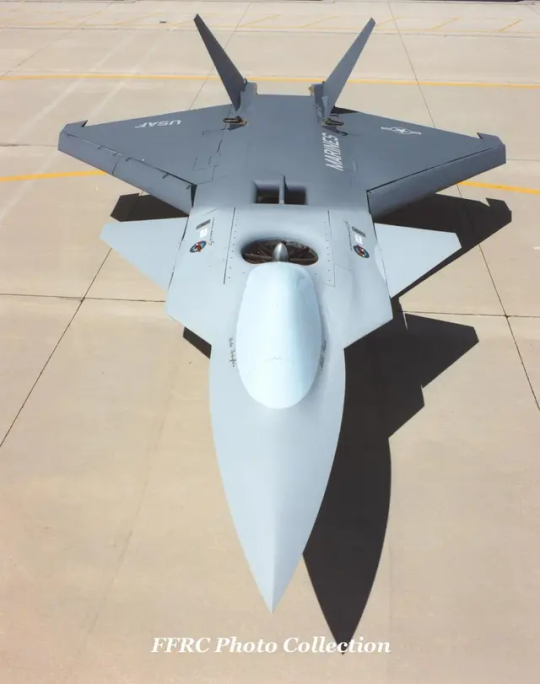

Lockheed Martin's JAST (early iteration of what eventually became the X-35 and then the F-35)
36 notes
·
View notes
Text



A refurbished Skylab Workshop with an additional module.
source
19 notes
·
View notes
Text
"NASA achieved a major milestone April 3 for production of new RS-25 engines to help power its Artemis campaign to the Moon and beyond with completion of a critical engine certification test series at NASA’s Stennis Space Center near Bay St. Louis, Mississippi.
The 12-test series represents a key step for lead engines contractor Aerojet Rocketdyne, an L3Harris Technologies company, to build new RS-25 engines, using modern processes and manufacturing techniques, for NASA’s SLS (Space Launch System) rockets that will power future lunar missions, beginning with Artemis V."
Date: April 3, 2024
NASA's Marshall Space Flight Center: link
#Space Launch System#SLS#Rocket#Artemis program#NASA#Space Shuttle Main Engine#SSME#Rocketdyne RS-25#RS-25#Rocket Engine#Test Stand#John C. Stennis Space Center#Stennis Space Center#SSC#Hancock County#Mississippi#April#2024#video#my post
22 notes
·
View notes
Text
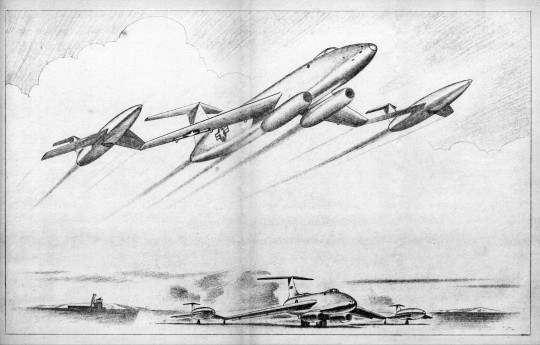
"The Martin Aircraft Company was a bit more outlandish when they proposed using their new XB-51 medium bomber to carry two of their latest MX-771 Matador winged missiles, one on each wingtip, selling two products at one time."
U.S. Air Force Photo: 240223-F-XX999-1003
#Martin XB-51#XB-51#B-51#Bomber#Martin XA-45#XA-45#A-45#Cancelled#United States Air Force#U.S. Air Force#US Air Force#USAF#concept art#undated#1950s#my post
7 notes
·
View notes
Text
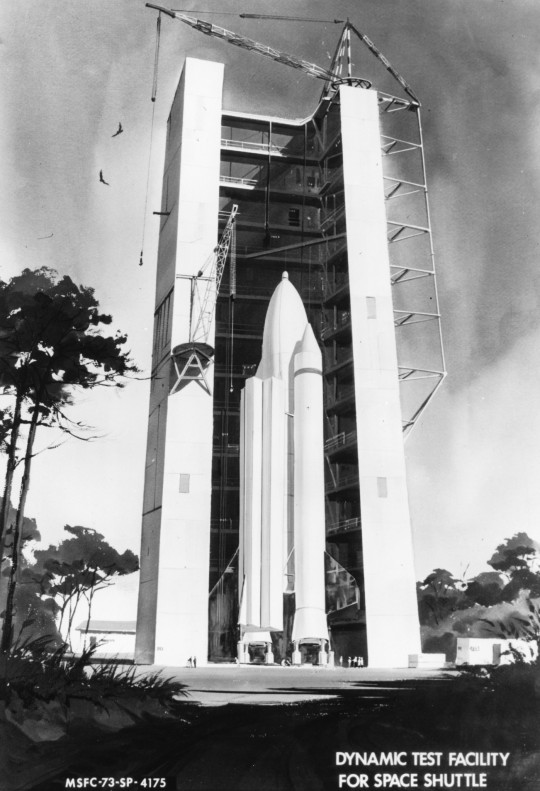
Concept art of the dynamic test facility for Space Shuttle at Marshall Space Flight Center in Huntsville, Alabama.
Date: 1973
NASA ID: MSFC-73-SP-4175
#Space Shuttle#Space Shuttle Development#Concept Art#NASA#Space Transport System Program#Space Transport System#STS#Mated Vertical Ground Vibration Test#MVGVT#Marshall Space Flight Center#MSFC#Huntsville#Alabama#1973#undated#my post
20 notes
·
View notes
Text
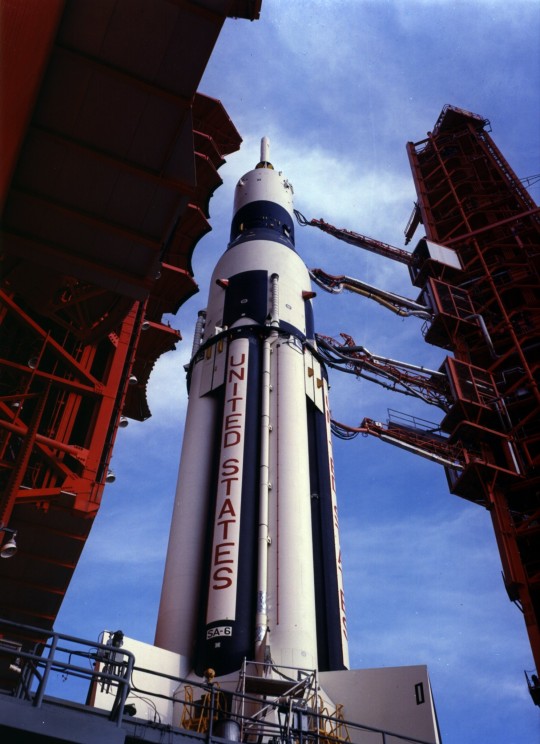
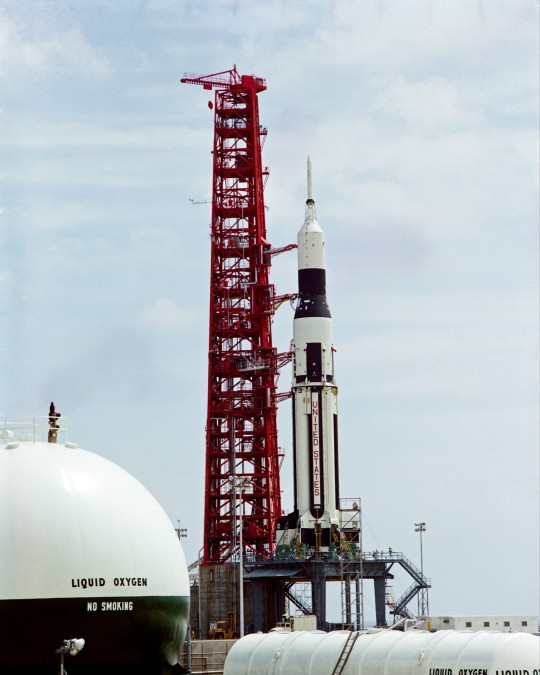

AS-101 Saturn I Block II (BP-15/SA-6) on the pad, prior to a radio frequency interference test at launch complex 37.
Date: April 24, 1964
NASA ID: SA-VI-99, S64-22479, 64-SA6-22
70 notes
·
View notes
Text

Martin XB-51 on the cover of Model Airplane News magazine. Artwork by Jo Kotula.
Date: April 1950
Shared on Flickr by Andrew P. Yanchus: link
#Martin XB-51#XB-51#B-51#Bomber#Martin XA-45#XA-45#A-45#Cancelled#United States Air Force#U.S. Air Force#US Air Force#USAF#April#1950#magazine#my post
17 notes
·
View notes
Text

"STS-31 Discovery (OV-103), lifts off from Kennedy Space Center (KSC) Launch Complex (LC) 39 Pad B. Discovery, carrying a five-member crew and the Hubble Space Telescope, lifted off at 8:34 a.m. EDT, April 24. STS-31 crew members are: Commander Loren Shriver; Pilot Charles Bolden; and Mission Specialists Steven Hawley, Bruce McCandless II, and Kathryn Sullivan.
In the foreground, STS-35 Columbia (OV-102), is visible on launch pad 39A. Columbia, with its Astro-1 observatory, was scheduled for launch in May.
This event marked the first time since January 1986 that there was an orbiter on each pad. LC 39 pads are separated by 1.6 miles."
Date: April 24, 1990
NASA ID: SPD-GRIN-GPN-2000-00 0684, S90-44867
38 notes
·
View notes
Text
Cancelled Mission: Skylab Rescue Mission (SL-R)
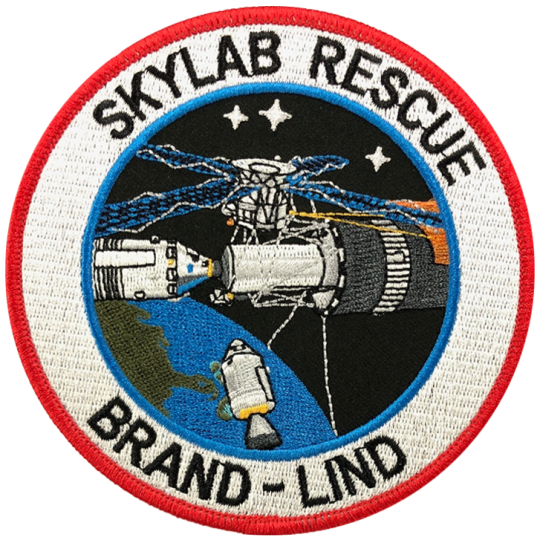
Mission patch for rescue mission for SL-3
Spacecraft: CSM-119
Launch Vehicle: Saturn IB AS-208, later AS-209
Commander: Vance D. Brand
Command Module Pilot: Don L. Lind
Intended launch date: September 1973, (on standby from August 1973 - February 1974)
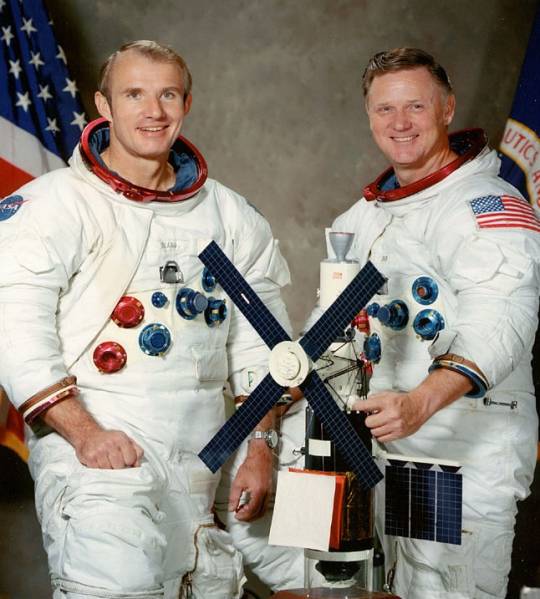
Skylab rescue mission crewmen Vance Brand (left) and Don Lind.
"Influenced by the stranded Skylab crew portrayed in the book and movie 'Marooned', NASA provided a crew rescue capability for the only time in its history." Prepared for launch during Skylab 3."
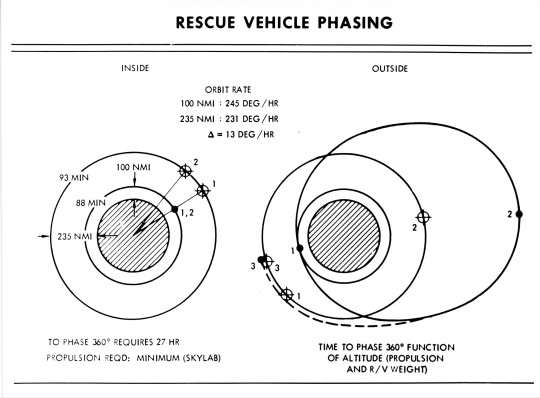
"Skylab rescue vehicle phasing - NAR Space Division drawing illustrates phasing of 5-seater Skylab rescue vehicle for a Skylab mission."
Date: April 5, 1971
"A kit was developed to fit out an Apollo command module with a total of five crew couches. In the event a Skylab crew developed trouble with its Apollo CSM return craft, a rescue CSM would be prepared and launched to rendezvous with the station. It would dock with the spare second side docking port of the Skylab docking module."
- information from Astronautix.com: link
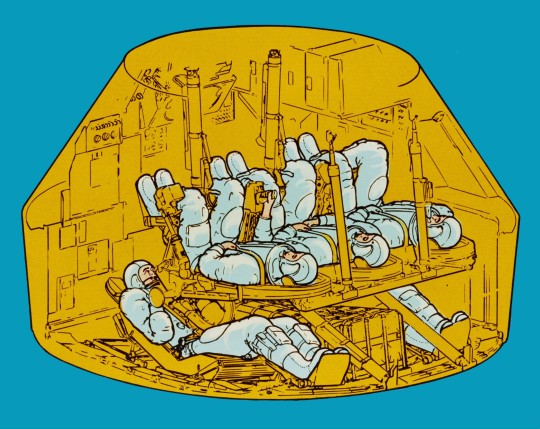
"The Apollo Command Module as modified to rescue stranded crews for the Skylab program. Two crew + three rescuees packed like sardines...."
"Skylab 3 astronauts Alan Bean and Jack Lousma helped design the "field modification kit" to use a standard CSM for rescue, and would have flown the CSM for their mission to rescue Skylab 2 if necessary. The standard Skylab Command Module accommodated a crew of three with storage lockers on the aft bulkhead for resupply of experiment film and other equipment, as well as the return of exposed film, data tapes and experiment samples. To convert the standard CSM to a rescue vehicle, the storage lockers were removed and replaced with two crew couches to seat a total of five crewmen."

Posted on Flickr by Mike Acs. NASA ID: 108-KSC-70P-69
"Soon after Skylab 3's launch the crew's CSM developed a problem with Quad B, one of its four reaction control system thrusters. On August 2, 1973, six days later, a snowstorm-like effect outside the station startled the crew during breakfast. What appeared to be 'a real blizzard' was fuel leaking from Quad D, opposite from Quad B. The malfunctions left two available quads, and while the spacecraft could operate with just one, the leaks posed a possible risk to other systems. The fuel for all quads and the main service propulsion system (SPS) engine were from the same batch; if the SPS fuel was contaminated, the CSM might not be able to deorbit.
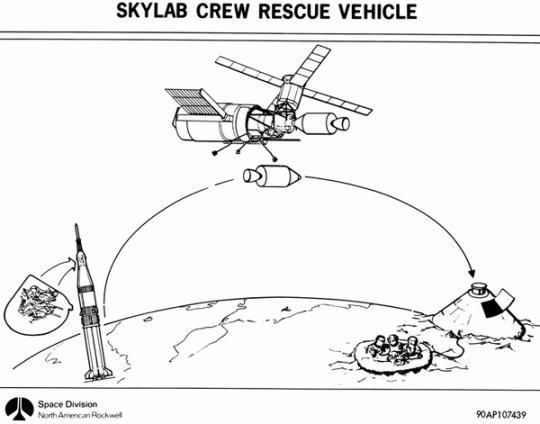
source
NASA considered bringing the crew home immediately, but because the astronauts were safe on the station with ample supplies and because plans for a rescue flight existed, the mission continued while the Saturn IB rocket AS-208 with CSM-119 was assembled in the Vehicle Assembly Building at Launch Complex 39 for possible use. It was at one point rolled out to LC-39B.
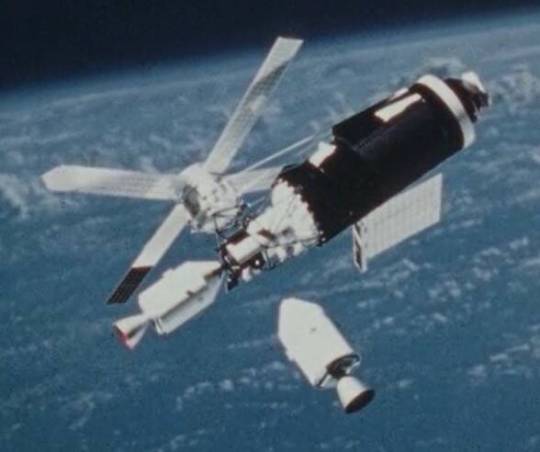
Illustration of the rescue Apollo spacecraft preparing to dock at Skylab’s lateral port. source
NASA announced on August 4 that Skylab 3 and Skylab 4 backup crewmen Vance Brand and Don Lind would fly any rescue mission; they had immediately begun training for the flight once the second quad had failed on August 2. After engineers found that the leaks would not disable the spacecraft, the two men used simulators to test reentry using two quads. If ground personnel worked 24 hours a day and skipped some tests, the mission could launch on September 10, and would last no more than five days. The astronauts would attempt to prepare Skylab for further use but returning experimental data and diagnosing the cause of the problem were more important, with Lind choosing what would be brought back. Human urine and feces samples and Apollo Telescope Mount and other film were the priorities. Although Skylab had two docking ports the primary one would be used if possible, jettisoning the Skylab crew's CSM if necessary.
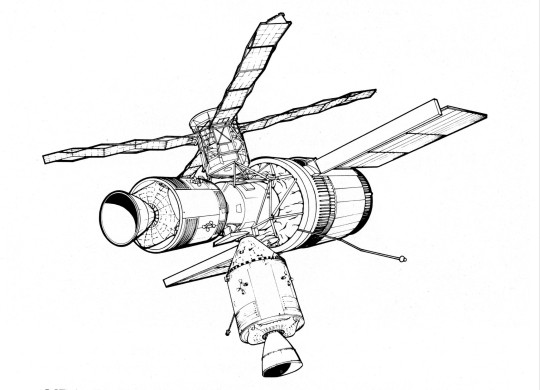
Posted on Flickr by Drew Granston: link
While many within NASA believed that the rescue mission would occur, within hours of the failure of the second quad the agency canceled the rescue mission. Beyond NASA's conclusion that the failed quads would not disable the Skylab 3 CSM and the SPS fuel was uncontaminated, Brand and Lind had already shown during their training as backup Skylab crewmen that a reentry with failed quads was safe. They also devised a method to deorbit with the command module's attitude control system. Later joking that they were 'very efficient but perfectly stupid, because we have literally worked ourselves out of the mission', Brand and Lind continued to train for a rescue mission, as well as for their backup roles, but the Skylab 3 crew was able to complete its full 59-day mission on the station and safely return to Earth using the two functional RCS thruster quads, using the SPS engine once instead of twice as precaution."
- Information from Wikipedia: link

Posted on Flickr by Ed Dempsey: link
Saturn IB SA-208 was used for Skylab 4 and SA-209 was assigned to the standby rescue mission. At one point, CSM-119/SA-209 was slated for the Skylab 5 mission but it was cancelled when SL-4 was extended and completed all of it objectives.

Mission patch for rescue mission for SL-4
Later, CSM-119/SA-209 was the backup launch vehicle for Apollo-Soyuz Test Project mission and standby rescue vehicle. After the Apollo program ended, the surplus rocket and spacecraft were displayed at the Kennedy Space Center, Florida.
NASA ID: 71-H-662, S73-31922
source, source
#Skylab Rescue#SL-R#Apollo CSM Block II#CSM-119#Saturn IB#SA-208#SA-209#Rocket#NASA#Apollo Program#Apollo Applications Program#Cancelled#Cancelled Mission#September#1973#my post
40 notes
·
View notes
Photo

2024 April 24
Dragon’s Egg Bipolar Emission Nebula
Image Credit & Copyright: Rowan Prangley
Explanation: How did a star form this beautiful nebula? In the middle of emission nebula NGC 6164 is an unusually massive star. The central star has been compared to an oyster’s pearl and an egg protected by the mythical sky dragons of Ara. The star, visible in the center of the featured image and catalogued as HD 148937, is so hot that the ultraviolet light it emits heats up gas that surrounds it. That gas was likely thrown off from the star previously, possibly the result of a gravitational interaction with a looping stellar companion. Expelled material might have been channeled by the magnetic field of the massive star, in all creating the symmetric shape of the bipolar nebula. NGC 6164 spans about four light years and is located about 3,600 light years away toward the southern constellation Norma.
∞ Source: apod.nasa.gov/apod/ap240424.html
100 notes
·
View notes
Text

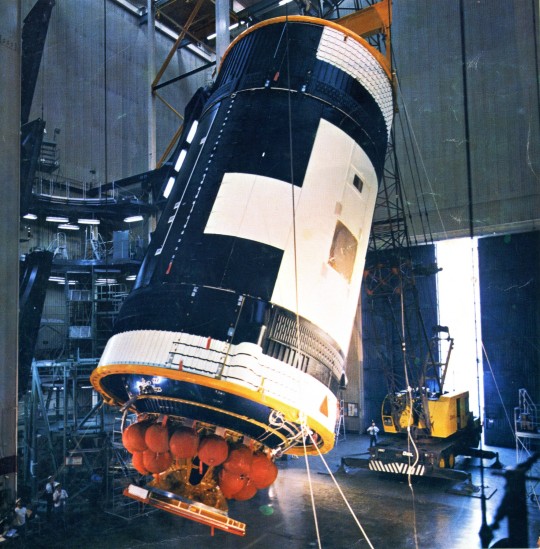
Skylab in the hanger
"This photograph shows the Skylab Orbital Workshop (OWS) assembled, with its Thruster Attitude Control System (TACS) and radiator, ready for placing on the transporter. Twenty-two titanium spheres above the radiator housed the nitrogen required for operation of the TACS. At one end of the OWS, the TACS provided short-term control of the attitude of the Skylab."
Date: 1970
NASA ID: S70-34485
Posted on Flickr by Ed Dempsey: link
#Skylab Orbital Workshop#Skylab OWS#Skylab#Skylab I#Skylab 1#SL-1#Space Station#NASA#Apollo Program#Apollo Applications Program#McDonnell Douglas#Factory#Lambert Field#St. Louis#Missouri#1970#undated#my post
19 notes
·
View notes
Text

This photograph shows activities during assembly of the Skylab cluster at the Vehicle Assembly/Checkout building. The Saturn V S-IVB stage is shown at left, and right is the Orbital Workshop (OWS) being readied for mating to the thruster. The S-IVB stage was modified to house the OWS, which provided living and working quarters for the Skylab crews. The Marshall Space Flight Center had responsibilities for the design and development of the Skylab hardware, and management of experiments.
Date: 1970
NASA ID: S70-19524
#Skylab Orbital Workshop#Skylab OWS#Skylab#Skylab I#Skylab 1#SL-1#Space Station#NASA#Apollo Program#Apollo Applications Program#McDonnell Douglas#Factory#Lambert Field#St. Louis#Missouri#S-IVB#1970#construction#undated#my post
17 notes
·
View notes
Text
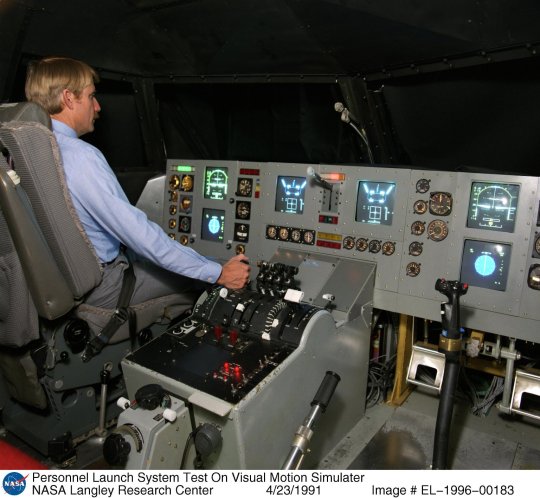
Personnel Launch System Test On Visual Motion Simulator by NASA/Langley Research Center (NASA-LaRC).
"A research pilot performs a simulated approach and landing in the HL-20 lifting body vehicle. This study, conducted at NASA Langley Research Center's Visual/Motion Simulator, demonstrated the feasibility of the HL-20 as an unpowered glider in landing on a conventional runway."
Date: April 23, 1991
NASA ID: NIX-EL-1996-00183
24 notes
·
View notes
Text
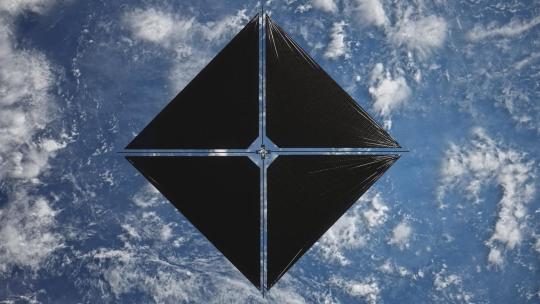
Setting Sail to Travel Through Space: 5 Things to Know about our New Mission
Our Advanced Composite Solar Sail System will launch aboard Rocket Lab’s Electron rocket from the company’s Launch Complex 1 in Māhia, New Zealand no earlier than April 23, at 6 p.m. EDT. This mission will demonstrate the use of innovative materials and structures to deploy a next-generation solar sail from a CubeSat in low Earth orbit.
Here are five things to know about this upcoming mission:
1. Sailing on Sunshine
Solar sails use the pressure of sunlight for propulsion much like sailboats harness the wind, eliminating the need for rocket fuel after the spacecraft has launched. If all goes according to plan, this technology demonstration will help us test how the solar sail shape and design work in different orbits.
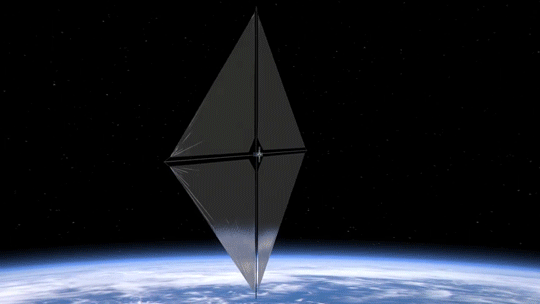
2. Small Package, Big Impact
The Advanced Composite Solar Sail System spacecraft is a CubeSat the size of a microwave, but when the package inside is fully unfurled, it will measure about 860 square feet (80 square meters) which is about the size of six parking spots. Once fully deployed, it will be the biggest, functional solar sail system – capable of controlled propulsion maneuvers – to be tested in space.

3. Second NASA Solar Sail in Space
If successful, the Advanced Composite Solar Sail System will be the second NASA solar sail to deploy in space, and not only will it be much larger, but this system will also test navigation capabilities to change the spacecraft’s orbit. This will help us gather data for future missions with even larger sails.
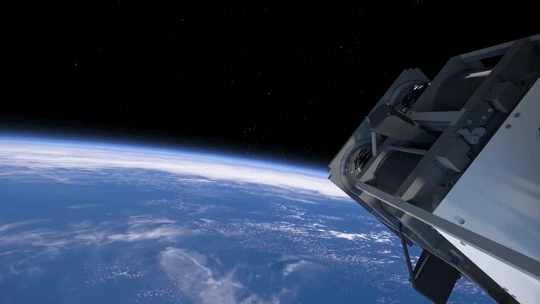
4. BOOM: Stronger, Lighter Booms
Just like a sailboat mast supports its cloth sails, a solar sail has support beams called booms that provide structure. The Advanced Composite Solar Sail System mission’s primary objective is to deploy a new type of boom. These booms are made from flexible polymer and carbon fiber materials that are stiffer and 75% lighter than previous boom designs. They can also be flattened and rolled like a tape measure. Two booms spanning the diagonal of the square (23 feet or about 7 meters in length) could be rolled up and fit into the palm of your hand!

5. It’s a bird...it’s a plane...it’s our solar sail!
About one to two months after launch, the Advanced Composite Solar Sail System spacecraft will deploy its booms and unfurl its solar sail. Because of its large size and reflective material, the spacecraft may be visible from Earth with the naked eye if the lighting conditions and orientation are just right!
To learn more about this mission that will inform future space travel and expand our understanding of our Sun and solar system, visit https://www.nasa.gov/mission/acs3/.
Make sure to follow us on Tumblr for your regular dose of space!
877 notes
·
View notes

